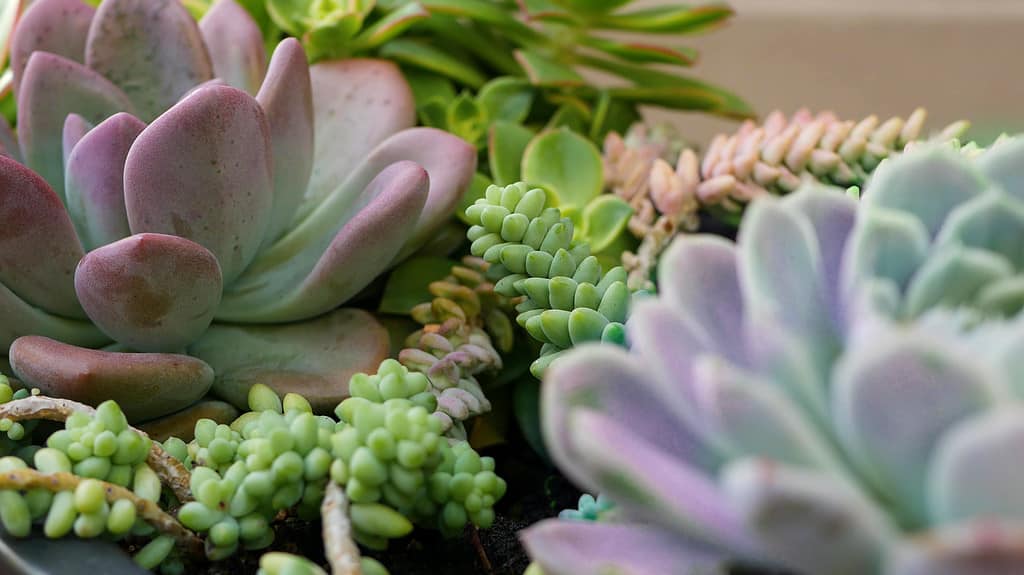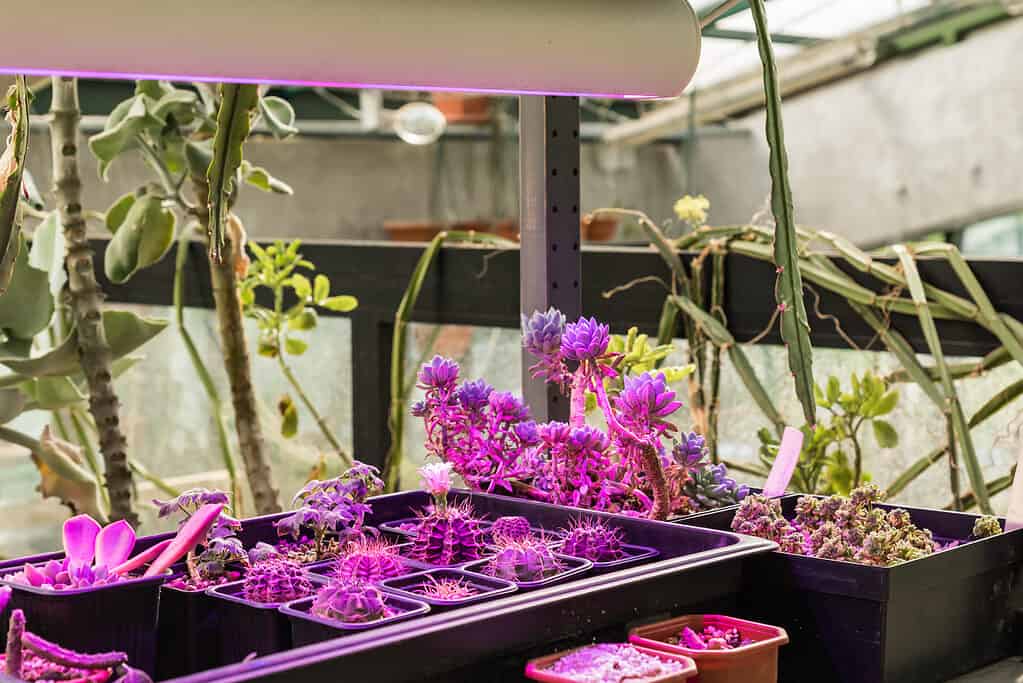Every plant owner knows the stress and anxiety of preparing plants for the winter. Are you even a plant parent if you haven’t given your succulents a pep talk about survival?
Helping succulents survive and thrive during the winter takes some careful planning. Here are some best practices for succulent care during the winter months.
Reduce Watering Frequency
Most succulents enter a dormant state during the winter months. While the time period varies from species to species, most start to enter dormancy during the fall when the temperature and daylight hours drop.
There are exceptions to this rule. Some succulents, like Aeonium, Sansevieria, and some Sedum cultivars, are dormant in the summer. However, they go through a semi-dormant phase during the peak winter months.
As the succulents aren’t actively growing, they need less water. Your succulents are at greater risk for overwatering during the winter months, as the roots won’t actively suck up as much moisture.
The general recommendation is to reduce the watering frequency to approximately every 21 days during the winter months. Gradually reduce the frequency between waterings to help your succulents transition to dormancy. It’s best to monitor your succulents based on your unique surroundings and water when the soil is completely dry.
When in doubt, wait a little longer and look for signs of withering or dropping leaves. Succulents are more drought-tolerant than you think.

Most succulents enter a dormant state during the winter months and need less water since the roots won’t absorb this moisture as quickly.
©iStock.com/DogoraSun
Avoid Repotting and Propagating
As your succulents are entering dormancy, it’s best to avoid repotting or propagating until right before their active period in the spring. Again, cold-hardy succulents like those listed above are the exception.
During the dormant period, energy absorption is greatly reduced. This can make it difficult for succulents to recover from the stress of being repotted or propagated. Similarly, the diminished activity levels make it harder for the roots to take to their new home.
Propagates also struggle to take root and grow for the same reasons. It’s better to wait unless it’s an emergency (signs of fungal growth or root rot, for example).
Limit Fertilization
Adding fertilizer to keep your succulents healthy during winter may seem like a good option, but it could actually harm your plant.
The reduced light and dormancy make it difficult for the succulent to use fertilizers or plant food effectively, which could lead to root damage. Unused fertilizer could also impact the pH balance of the soil, harming the succulent.
Maintain a Consistent Temperature
Succulents require a warm environment to thrive — even the cold hardy species.
Try to keep your succulents in a space that’s above 55° Fahrenheit to prevent cold shock. If you live in a climate that dips below these temperatures, bring your succulents indoors or insulate them with burlap for the winter.
Cold hardy succulents can survive outdoors in subzero temperatures with proper insulation. Non-cold hardy succulents should be brought inside before the temperature drops below 55°F.
Be mindful of your indoor container placement. Avoid placing your succulents near drafty windows or vents. Signs of cold shock sometimes take weeks to show — a subtle draft may kill your succulent before you catch on.
Similarly, heating vents can blast your succulent with high temperatures and dry air, causing them to dry out faster and wither.

Non-cold hardy succulents should be brought inside before the temperature drops below 55°F.
©iStock.com/simonapilolla
Invest in Grow Lights
Succulents require at least 6-8 hours of sunlight per day to survive. In the winter, a minimum of four hours is ideal.
Consider investing in grow lights if you live in a cold climate with minimal daylight hours during the winter months. The best grow lights for succulents should be full spectrum with both red and blue light. The lights can be either LED or fluorescent and should have a wattage range of 50-75 watts per square foot.
Place your succulents at least 12-18 inches from the light to prevent burning. You may need to use your grow lights for 12+ hours per day to replicate the sun. Consider easing your succulents into light exposure to prevent shock, starting with supplemental lighting in the fall and gradually increasing into the winter.

Consider investing in
grow lights
if you live in a cold climate with minimal daylight hours during the winter months.
©Irina Kvyatkovskaya/Shutterstock.com
Stay on Top of Maintenance
Even though your succulents are dormant, they still need some TLC.
Monitor your succulents for signs of cold shock, light burn, pests, or other negative reactions to their environment. Don’t be intimidated by slow growth and dropping leaves; this is normal during the winter months.
Prune withering leaves to redirect energy to the stem and root system. Remove all dropped leaves from the pot to prevent bacteria growth.
Pest invasions are common during the winter months. Spider mites, mealy bugs, scale insects, and mold growth could potentially damage your plant and deplete its already diminished energy reserves.
Resume your usual care schedule in the spring.
The photo featured at the top of this post is © Wirestock Creators/Shutterstock.com
Thank you for reading! Have some feedback for us? Contact the AZ Animals editorial team.






